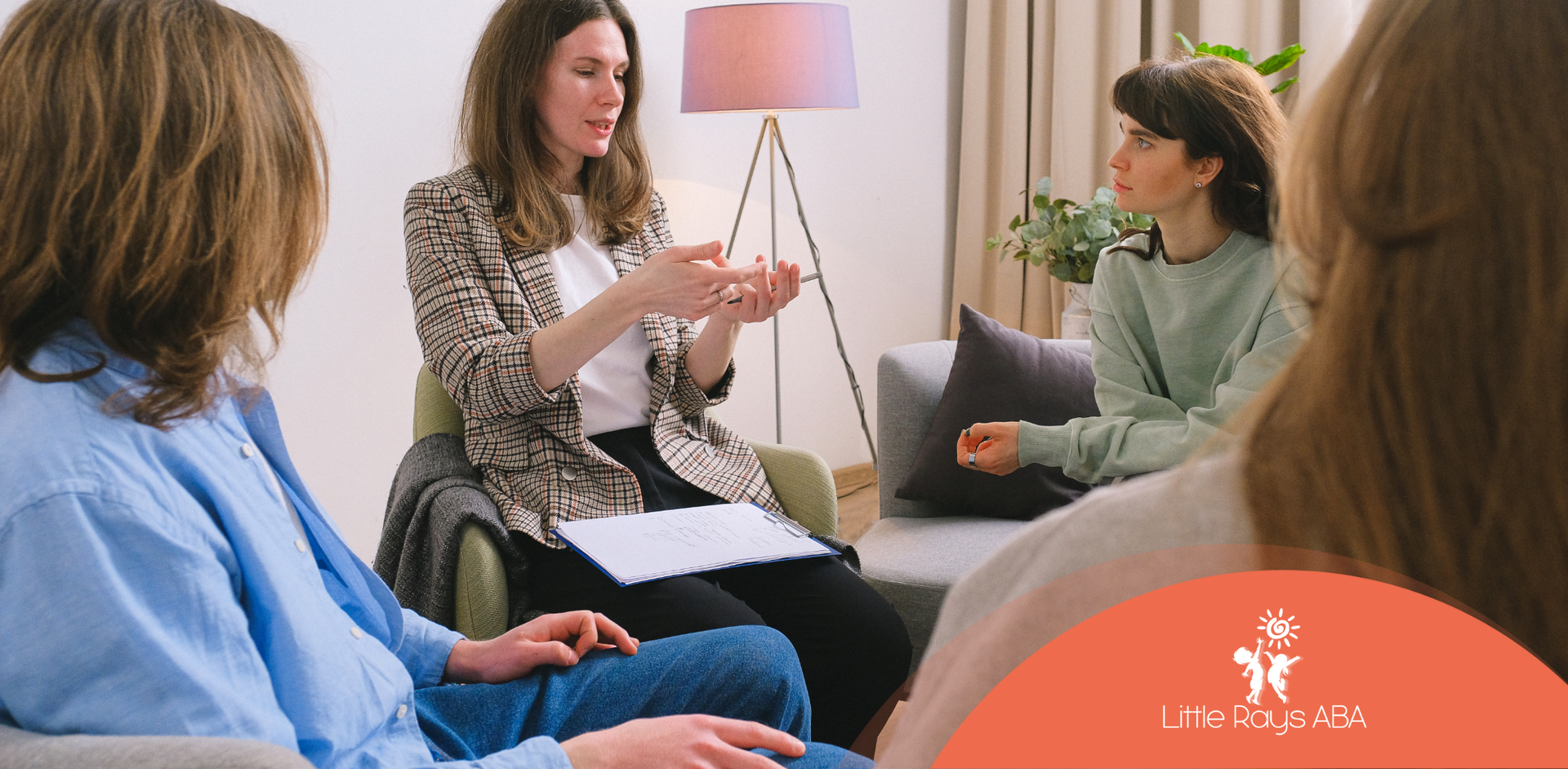
Is ABA Therapy Backed by Science? Myths vs. Facts
ABA therapy is a proven way to help people with autism. Many experts agree that it works well. Even though it can have a good impact, some misunderstandings about ABA are still common. These can make people unsure about what it is and how it works. Is ABA therapy truly supported by science? Does it help people with autism live better lives? In this article, we will talk about these questions. We will explain what ABA therapy is, how it works, and clear up some common misconceptions. Let’s begin by learning about ABA and the science that makes it work.
Understanding ABA Therapy and Its Scientific Foundations
Applied behavior analysis (ABA) therapy is a practical and science-based way to help people make progress in their lives. This kind of therapy looks at people's actions to help them achieve better outcomes by breaking down complex skills into more manageable steps and feeling more positive. When you use the study of behavior analysis, the therapist works to make real and lasting changes for those they help.
With structured frameworks, ABA helps people with autism grow their communication skills and be better at social interactions and being independent. Numerous studies support the scientific basis of ABA therapy, meaning the plans, data collection, and tests they do are based on facts and proven methods. Let's look at how ABA and applied behavior analysis work and what makes them strong because they follow science and help people.
What Is Applied Behavior Analysis (ABA) Therapy?
Applied behavior analysis (ABA) is a way to help change how people act, using science-based ideas. ABA uses different ways to teach new things and help stop tough behaviors. Most often, ABA helps people who have autism spectrum disorder (ASD). With applied behavior analysis, people learn by using rewards to encourage good actions. This kind of behavior analysis pays close attention to data, so everyone can see what is working best.
The Scientific Principles Behind ABA
ABA therapy uses core scientific ideas like reinforcement, task analysis, and step-by-step intervention plans. Using these ways helps bring about steady changes in desired behavior that last over time.
For example, therapists often use positive reinforcement in their work. They give rewards when someone shows the behavior the therapist wants, so the person will do it again in the future. This thinking is different from using punishments, showing that ABA therapy strongly cares about using good and fair ways. Data collection is a part of this process. It helps with keeping track of changes and making sure that progress is measured and steady.
ABA therapy is very closely tied to behavior analysis theories. For instance, techniques such as functional analysis let therapists see how outside factors can change how a person acts or grows. These same principles take the goals for certain disorders and turn them into real ways to help people. Up next, we will talk more about the main approaches that make ABA therapy work well.
Key Components and Practices in ABA Therapy
ABA therapy works well when the treatment plans are made for each person’s unique needs. People with autism and other needs get help through these plans. The whole process starts with a full check to see what each person needs. Every idea is backed by data, and there is always room to adjust the plan as things change.
Data collection is a key part of seeing how someone is doing in ABA therapy. People work together with families, too, so everyone is part of the process. When you mix all these ideas, the result is that people see real and lasting changes in behavior. Trained board certified behavior analysts or skilled therapists are often the ones helping. Their close work with the people getting ABA and the science behind it make a real difference in behavior change. Now, let’s take a closer look at these steps and see how they work together.
Data-Driven Assessment and Goal Setting
Data collection is a crucial part of ABA therapy. It helps show how much progress is made and how well the therapy is working. Therapists use special tests in therapy sessions for behavior analysis. This helps them find behavior patterns and set goals that are clear, easy to measure, and fit the needs of each person.
- Behaviour observation: Watching behavior closely to find what starts it and how best to solve any issues.
- Goal establishment: Finding goals that can be reached so there can be proper growth.
- Tracking progress: Writing down notes every day about how someone’s behavior changes over time.
- Modifying interventions: Changing the way a therapist works with someone if results are not as good as they could be.
When therapists look at the data often, they can make sure each person gets the right support for their individual needs. The use of behavior analysis techniques like data mapping in ABA therapy helps each person get better. It also keeps track of changes in a very clear way and helps show how good ABA and the sessions can be for them.
Individualized Treatment Plans in ABA
Tailored interventions are important parts of ABA therapy. Every plan for treatment begins with a complete check done by board certified behavior analysts (BCBAs). This is to find out what a person really needs.
Planning in ABA looks at the individual’s strengths, goals, and challenges. The aim is to help a person grow in areas like communication skills or day-to-day living. The therapy sessions are made for each person, giving them one-on-one support.
In ABA therapy, progress is always watched during therapy sessions. Any changes needed for relevance or better results are made quickly. This way, ABA gives customized care to fit each person. The goal is to help people reach their best and see real changes in their lives.
Common Myths About ABA Therapy
Misunderstandings about ABA therapy often stop families from trying it. Many people still believe myths about ABA that can keep them away from getting help. Some think ABA therapy uses old ways that are not good. Others don’t know all of the things it can do to help.
A common belief is that ABA is only for autistic children. Some people also ask if it really is backed by science. Clearing up these misconceptions is important for families. When people know the truth, they will see how ABA therapy has good results and uses safe methods. Here, we will talk about some of the most common myths and explain the real facts about ABA therapy.
Myth #1: ABA Therapy Is Not Backed by Science
A lot of people think that ABA therapy does not have proof from science. But many research studies and clinical trials show that this isn't true. The principles of ABA are based on methods that use real proof. The goal is skill development and real, long-lasting behavior change.
For example, many studies show the efficacy of ABA in helping with communication and in building better day-to-day behaviors. It also helps with the ways people think and learn. Groups like the American Psychological Association also say that the foundation of ABA therapy is strong in science.
Certified helpers, called BCBAs, use research that goes back many years. They make sure each plan fits the person. Families can feel good about choosing ABA therapy because it is known to follow real rules that work. The foundation of ABA makes sure people get the best help possible.
Myth #2: ABA Is Only for Children with Autism
Many people think that ABA therapy is just for kids with autism, but this is not right. ABA therapy is important for early intervention programs for autism spectrum disorder, but it is also helpful for adults and people who face other challenges, like traumatic brain injuries or anxiety.
ABA therapy can help many groups of people see progress. It can do this through skill development or by changing how someone acts. Adults can get help, too, with structured ABA therapy. This can guide them with work skills or help them live more on their own.
The core principles of ABA use positive reinforcement. These ideas can be shaped to fit different people and needs. With these principles, ABA can help improve the quality of life for people of all ages.
Evidence Supporting ABA Therapy
The long-lasting good results of ABA therapy have been shown for many years by strong scientific evidence. Today, experts use research to guide how ABA therapy is made for people who have autism spectrum disorder.
Many studies and expert reviews show that ABA therapy is a best practice when it comes to helping with communication, social interactions, and being more independent. ABA therapy can be changed to fit many types of needs. This makes it a great option for families who want to see meaningful progress. Now, let’s look more at the proof that supports ABA therapy.
Research Studies and Clinical Trials
Many clinical trials show how ABA therapy helps. Here is a text table with key studies:
| Study Name | Focus Area | Outcome Achieved |
|---|---|---|
| Early Intensive Intervention | Communication & Adaptive Skills | Enhanced skill development |
| Functional Behavior Analysis | Problem Behavior Reduction | Effective behavior substitution |
| Generalization via ABA | Long-Term Skill Maintenance | Skill application across environments |
Results from these studies show that ABA therapy uses solid, evidence-based techniques. These help people get new skills and show positive changes in behavior. The research over many years proves that behavior analysis in ABA is helpful, trusted, and can lead to better skill development and generalization in daily life.
Endorsements from Major Health Organizations
The credibility of ABA therapy as a best practice comes from strong support by health leaders such as the American Psychological Association and the U.S. Surgeon General. These groups say the structured but flexible way of ABA is vital in helping people with autism.
Major groups recognize aba as good for creating real change in things like communication and growth skills. BCBAs follow clear and strong rules, so people see ABA’s methods as reliable and helpful.
Because of these strong endorsements, families can feel good knowing aba therapy meets the highest standards for behavioral interventions.
Addressing Criticisms and Ethical Concerns
Many people worry about how aba therapy is done because they have seen old ways or there is some confusion about the use of reinforcement. Now, though, aba uses steps that are open and show care for the person.
Punishment does not get used the way it once was. There are positive alternatives for helping someone learn. The needs of each person are what guide the decisions in therapy. When aba hears and talks about people’s concerns, it helps families feel good about their choices for someone they care about.
Let’s look at the ways aba changes to meet needs and do what is right.
Misconceptions About Punishment in ABA
The idea that ABA mostly uses punishment is not true. Modern ABA now focuses on positive reinforcement, where a reinforcer is used to encourage wanted behaviors. In this way, wanted behaviors are rewarded. This helps to create a good and supportive place to learn.
Therapists use consequences in a careful and right way so all the methods will be kind and fair. Most of the time, they teach new actions that give positive alternatives. This helps people with their feelings and helps them be more independent. Every choice and step follows strict ethical rules to keep the work right.
Families can feel good knowing that ABA is made to be caring. It uses positive reinforcement and aims for each person’s success.
How ABA Adapts to Diverse Individual Needs
One thing that makes ABA therapy unique is how it can change to fit different people. Therapists know that everyone has their own challenges. They make treatment plans that focus on each person’s individual needs. This helps with behavior analysis, skill development, or both.
Therapists look at the problems each person has, like trouble with talking or using their hands. This way, they choose what works best to help them get better. The things they do in ABA therapy can be used in many places, not just one. This helps with generalization because caregivers and people can use what they learn anywhere.
Such a flexible plan helps people with all kinds of needs. It brings real change to anyone who wants to try ABA therapy.
Conclusion
To sum up, ABA therapy is backed by strong science, which clears up many misconceptions about what it can do. When you learn about the core principles and how ABA works, you start to see its real efficacy. There is a lot of good research showing how ABA therapy can help both kids and adults. Facing questions about ethics and misunderstandings also shows it is a kind and flexible way to help change behavior. If you are thinking about ABA therapy for yourself or someone in your life, talk to a qualified provider. They can help explain your choices and tell you how this proven method can make a good change for you.
At Little Rays ABA, we believe in the power of evidence-based practice to illuminate the path for every child with autism. While this article tackles the common myths and crucial facts about ABA therapy's scientific backing, we proudly uphold the highest standards of research-supported intervention. Our dedicated team utilizes proven Applied Behavior Analysis techniques, ensuring that every strategy is grounded in robust science and designed to achieve meaningful, measurable progress. Choose Little Rays ABA for a bright future built on trusted, effective, and scientifically validated therapy.
Frequently Asked Questions
Is ABA therapy effective for adults as well as children?
Yes, ABA therapy is helpful for both adults and children. It helps with skill development when someone has autism spectrum disorder or other challenges like traumatic brain injuries. With techniques such as behavior analysis and positive reinforcement, ABA can make it easier for people to get better at complex skills like communication and life skills. This approach helps everyone work on the things they need in their daily life.
How can I verify if my ABA provider is qualified?
Make sure that your provider is certified. Look for a Board Certified Behavior Analyst (BCBA), a Board Certified Assistant Behavior Analyst (BCaBA), or a Registered Behavior Technician (RBT). These licensed therapists have the right qualifications and know how. They can give quality care plus help with good and effective interventions. Having a certified behavior analyst is important. You can trust a board certified behavior analyst or a registered behavior technician (RBT) to help you get the best support.
Does ABA therapy ignore emotional or social needs?
No, ABA therapy helps people develop emotional and social skills. It uses different ways to help with feeling control, getting along with others, and better talking to people while considering their emotional needs. Therapy sessions be made to fit each person's needs. ABA works on both behavior and feelings in a complete way.
Sources:
https://www.autismspeaks.org/applied-behavior-analysis
https://www.psychiatry.org/patients-families/autism/what-is-autism-spectrum-disorder#:~:text=Autism%20spectrum%20disorder%20(ASD)%20is,restricted%20interests%20and%20repetitive%20behavior.
https://blossomabatherapy.com/blog/aba-therapy-benefits
https://www.thechicagoschool.edu/insight/psychology/scientific-concepts-applied-behavior-analysis/
https://blog.daar.com.au/blog/data-driven-success-the-role-of-data-in-aba-therapy
https://www.bacb.com/bcba/
https://gsep.pepperdine.edu/blog/posts/debunking-7-common-myths-about-aba-therapy.htm
Related Posts





